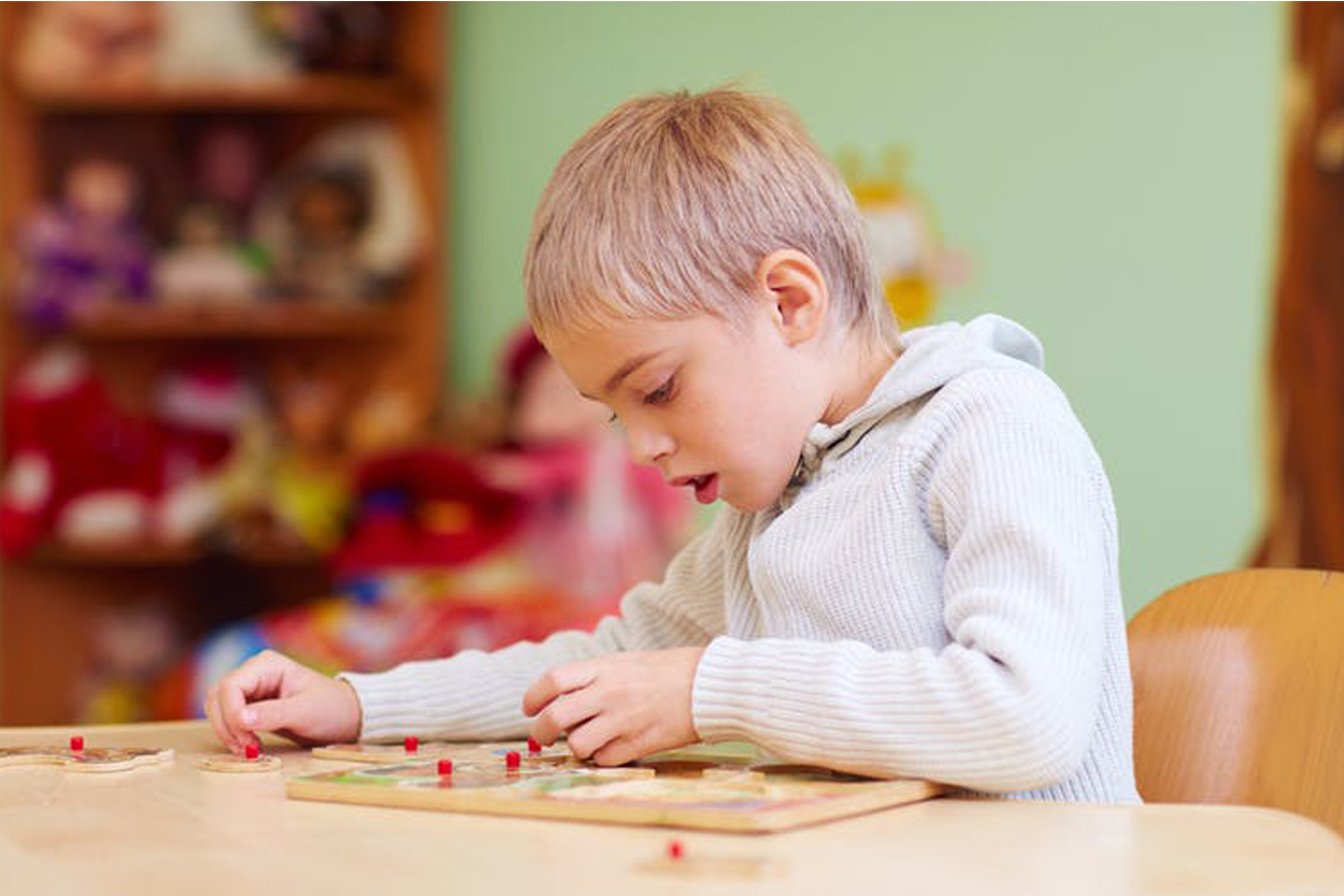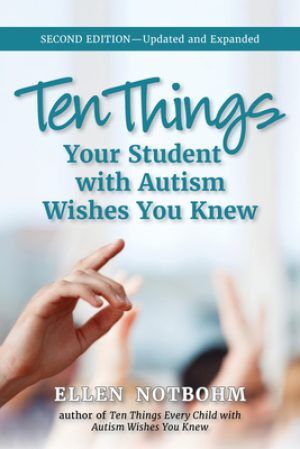
30 Jan Ten Things Your Student With Autism Wishes You Knew
Ellen Notbohm argues that we need to understand the causes of inappropriate behaviour in children with special needs, and examine what our own behaviour is telling them.
Teaching appropriate behaviour is always at the forefront of discussions about raising children, particularly children with autism or ADHD – conditions that frequently manifest through behaviour.
In recent years I have become increasingly fascinated with how so-called ‘typical’ adults respond to the challenging behaviours that these children present. Too frequently, what I see is a fatal lack of curiosity about the causes of these behaviours. At worst, this lack of curiosity includes an assumption that the child could change the behaviour at will if only they wanted to. Only slightly better are the efforts to address these behaviours by attempting to interrupt or extinguish them – squashing the symptoms but disregarding the source.
Understanding the Root Causes of Challenging Behaviours
Not only is behaviour probably the most discussed, debated and dreaded issue within the field of autism and similar conditions, it is also perhaps the most misunderstood. And yet the beginnings of taming the ‘behaviour beast’ come down to one simple concept: all behaviour is communication. Your child or student is giving you information about factors seen or unseen in their environment that are affecting their ability to cope with their overwhelmed sensory system, impaired language functioning, emotional or physiological issues or social expectations. The child is telling you that their so-called ‘negative’ behaviour is preventable – but only if you are willing to root out and address the cause.
And there is a reciprocal factor at work here too. What is your behaviour telling the child? We have to acknowledge that our own behaviour is information that we are imparting to the child about their environment. We can’t question what the child’s behaviour is telling us, without also questioning what our behaviour is telling the child.
I urge you to be as gentle in your efforts to change your child’s or student’s behaviour as you would reasonably expect for yourself. It strikes me as sheer lunacy how much we sometimes expect of children with autism in the area of behaviour modification, when we adults would find it difficult to accomplish an equivalent change ourselves. What real right do we have to expect greater inner fortitude of a child living with perpetual neurological challenge than we are able to muster ourselves.
You may have read far and wide on the subject of behaviour modification, but how much of what you’ve read asks you to focus not just on the child’s behaviour, but in equal part on your own behaviour and the role it plays in the equation? If you can accept that your child’s behaviour may be a response to your own behaviour, then here is some food for thought – some ways in which we can begin to turn the tide.
The Role of Adult Behaviour in Shaping Children’s Responses
Are you making a bad situation worse? Believe this: your child truly does not want the spirit-crushing feedback they get in response to ‘bad’ behaviour, nor do they intentionally melt down, lash out or otherwise disrupt the family or classroom. Ask yourself honestly whether your response to the child’s ‘bad behaviour’ is prolonging rather than resolving the crisis. Raising your voice means that the child clearly hears the volume and the tone, the anger and the scorn, but not necessarily the words.
Trying to shame or embarrass the child out of a particular behaviour, letting them ‘learn a lesson the hard way’, teaches them only that they cannot trust you to protect them and guide them respectfully. Imposing a double standard – making the child follow rules that are different from those of their peers or siblings – squashes the child’s self-esteem and only makes it harder for them socially. Comparing the child’s character or efforts to that of a sibling or other student is unfair and irrelevant.
At one time or another, we all make decisions in the heat of the moment that we later regret. If you do ‘lose it’, you can still produce a positive result by modelling how a responsible, compassionate and fully human person issues a sincere apology. Your child needs to learn that everyone messes up sometimes – even you – and that even when a mistake looks huge, we can still make things right and move on.
If you are not getting through, try another way. Perhaps you’ve heard the oft-quoted saying that the definition of insanity is always doing things the same way and expecting different results. If, despite your repeated efforts, your child’s or student’s behaviour isn’t changing, then maybe the behaviour that needs to change is yours. If the child’s behaviour hasn’t changed, then you haven’t found the root cause yet. Look further. When your teaching isn’t working, the burden is on you to change the teaching.
Effective Strategies for Behaviour Modification in Children with Special Needs
Are your ‘rewards’ really rewards? The interests of children with autism are usually quite a bit narrower than those of their NT (neurotypical) counterparts. So assuming that they will find ‘typical’ rewards motivating is a mistake. Being rewarded for good behaviour with ‘treats’ that the child hates (“Ice-cream hurts my teeth!”) or toys that they don’t understand (“But I don’t like the Star Trek Monopoly game!”) will not inspire change. If you want to know what rewards your child or student will find motivating, ask and observe.
Walk your talk. Be a model of what you want to see in the child. If you yell, mock or hit when you are mad, then the child will too. If you want to try to stop the child’s ‘stims’ (repetitive behaviours such as rocking, tapping or twirling), you can’t expect them to understand why if you’re cracking your knuckles, chewing your gum or jingling your keys. If you want the child to learn not to interrupt, and to pay attention to you when you talk, then double-check to make sure you are giving the child the same courtesy.
Choosing Battles: Prioritizing Health and Safety Over Minor Irritations
Is the child’s behaviour harmful, or just annoying to you? Behaviours that affect health or disrupt the home or classroom should be your first priority. After that, give some thought to other behaviours you find ‘inappropriate’ or ‘negative’. I know that incessant hair-twirling or tongue-clicking really gets on your nerves, but of what real importance is it in the context of all that this child is facing? Health and safety issues should trump mere irritations every time. Carefully consider and choose your battles – one at a time – and focus your efforts where they will have the greatest benefit.
Three centuries before the concept of autism spectrum disorders emerged, Isaac Newton described the behaviour equation perfectly in his third law of motion: for every action, there is an equal and opposite reaction. Or, to turn it around, every reaction is caused by an equal (to your child) and opposite action. Your words, your attitude, your actions and your reactions are determining factors in your child’s environment and in their responses to it. Only when we take a clear-eyed look at our own behaviour will we have a chance to make a positive impact on our children’s.
 This is an edited extract from Ten Things Your Student With Autism Wishes You Knew, 2nd edition (2022), published by Future Horizons. Also available atAmazon.
This is an edited extract from Ten Things Your Student With Autism Wishes You Knew, 2nd edition (2022), published by Future Horizons. Also available atAmazon.
Also see 10 Things Every Child With Autism Wishes You Knew on YouTube



